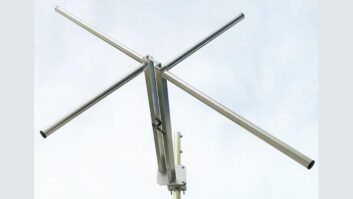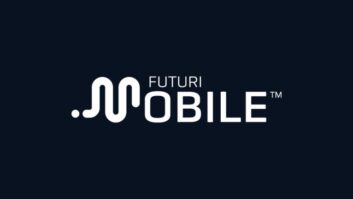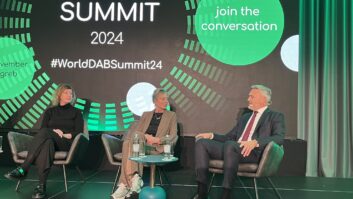LONDON � A new European Broadcasting Union technical review paper examines the real world costs of distributing and consuming radio and concludes that broadcast technologies remain the best option, according to EBU news.�
�While mobile broadband may serve a purpose for radio distribution in limited circumstances, particularly until smartphone manufacturers enable FM and DAB reception in their devices, the analysis demonstrated that it cannot compete with DAB when it comes to cost. Indeed, while mobile broadband compares well to FM for radio distribution, the study found that, at all but the very lowest population densities, DAB radio is the most cost-effective distribution platform.��
The real cost of listening to a minute of radio via mobile broadband was found to be seven times that of listening via broadcast, using the modeling technique identified in the study. If radio were to be delivered only by mobile broadband the cost would be even higher.�
The EBU’s Marcello Lombardo presented the results of his study at the EBU Digital Radio Summit. The figures have been updated since the presentation was delivered in February 2017. In setting out to do a cost-benefit analysis of radio technologies, Lombardo looked at both broadcasters and audiences. For the former, the distribution infrastructure requires both capital expenditure and operational expenditure; for the latter, he took into account both fixed costs (such as a broadcast reception license, ISP charges) and, especially for mobile reception, data use and other charges.
The entire analysis is available here. Mr Lombardo drew the following conclusions:
�This study modelled a country based on the statistics available from the five principal countries (France, Germany, Italy, Spain and the UK) of the EU28, and defined the operational expenditure for FM, DAB, and broadband using this �model country.�
�FM emerged as the most expensive distribution platform. Digital transition to DAB would indisputably lower the budget required for distribution, permitting greater investment in content production and employment.
�Broadband has a variable cost that depends on the listening time and the population reach it sustains. It proves to be an expensive technology for distribution and not really capable of competing with DAB for various reasons. Nevertheless, MBB could be considered as an alternative solution to terrestrial broadcasting in extreme cases where population density is very low. In these cases, the broadband providers� business models will determine whether it is feasible to cover the sparsely populated areas or not.
�The current need for MBB addresses some use cases that terrestrial broadcasting cannot; mainly due to the absence of mobile devices capable of receiving FM and/or DAB signals. By any standard, mobile broadband comes at a high price premium, in comparison with the broadcast model, that could in some cases threaten the ability of the population to access information. There is a clear need to make both analog and digital radio broadcast reception available on handheld devices, thus reserving the mobile data packages on such devices for more appropriate uses.
�For radio broadcasters, the way forward could be a transition to DAB, exploiting internet connectivity to provide additional low data services that enable interactivity with the audience.�
�







